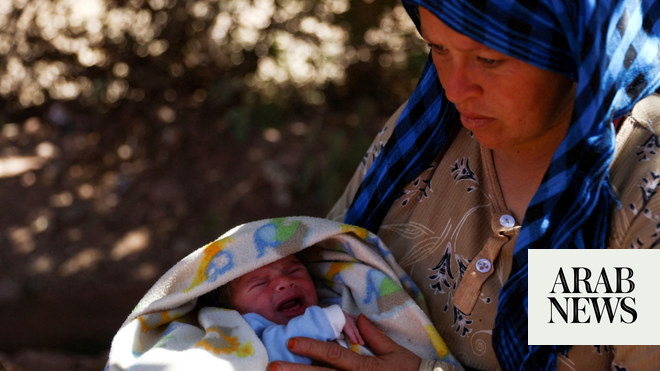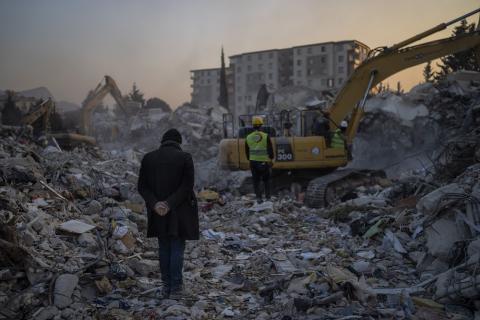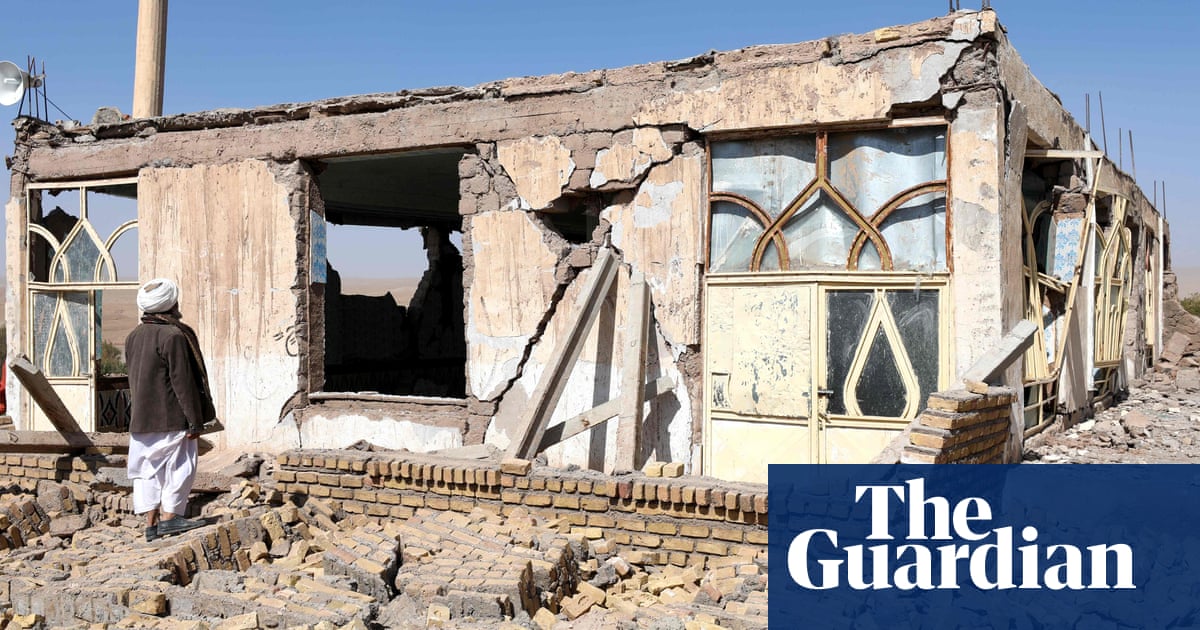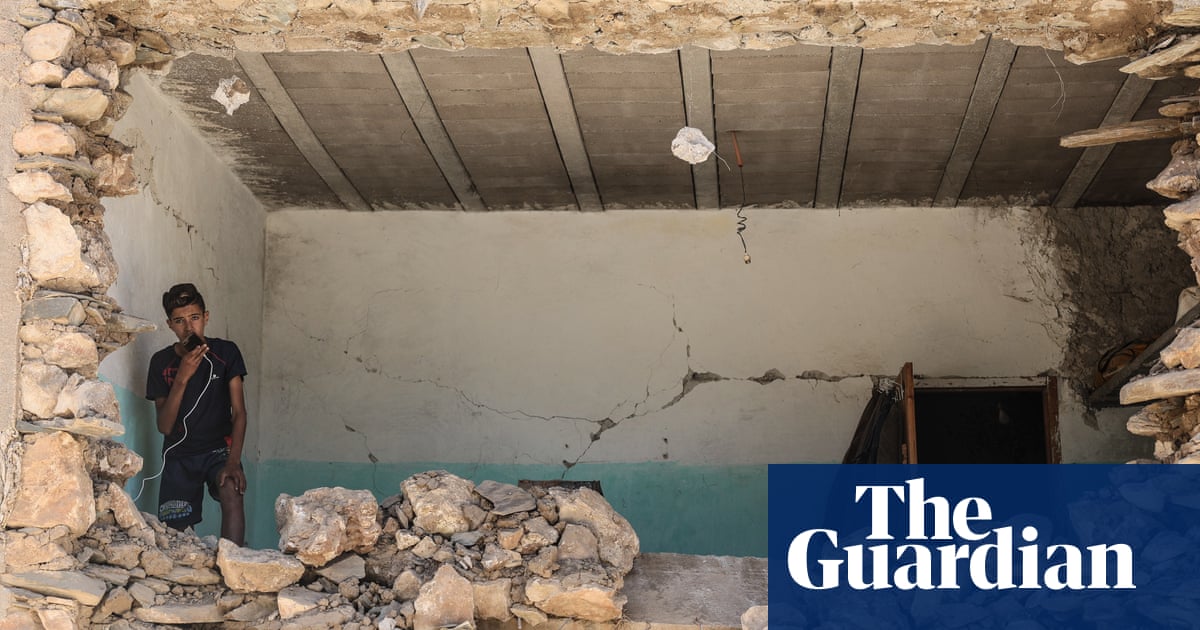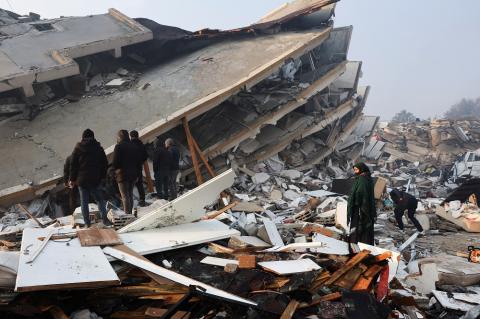
Torrential monsoon rains have hampered the hunt for survivors of Friday’s powerful earthquake on Indonesia’s Sulawesi island, as the death toll rose to at least 81, with thousands left homeless.
Excavators and cranes were deployed across the devastated seaside city of Mamuju, where buildings were reduced to a mass of twisted metal and chunks of concrete, including a hospital and the regional governor’s office.
It was unclear how many people could still be trapped in the debris in the aftermath of Friday’s 6.2-magnitude quake.
“The rain poses risks because damaged buildings could collapse if it gets too heavy ... and aftershocks could move them, too,” said rescuer Octavianto.
Excavating debris too fast with heavy equipment could crush and kill any buried survivors, he added. “All the victims we’ve found so far were dead,” said Octavianto, 37, who like many Indonesians goes by one name. “It is most likely any more victims are already dead if 24 hours has passed,” he said.
Scores of rescuers combed through the destruction, while police on Sunday deployed a unit of sniffer dogs to help in the search at a badly damaged hospital.
“We also use our own sense of smell to find possible victims,” said rescuer Kustang Firman at the hospital scene. “If there’s a strong scent, we’ll focus on that spot.”
Most victims of the tremors were found in Mamuju, but some were also recovered south of the city of 110,000 people in West Sulawesi province.
Friday’s quake triggered panic among residents, which was hit by a 2018 quake-tsunami disaster that killed thousands.
“We heard a roaring sound and the house started shaking,” said survivor Jumardi, 50, from a shelter where he and six family members took refuge. “All I had in my mind was that I would die ... Everyone was panicking.”
Authorities have not given a figure for how many survivors have been rescued, though heartening reports have emerged, for example, of a pair of young sisters who were plucked from under the mass of concrete and other debris and are now being treated in hospital.
Doctors treated patients with broken limbs and other injuries at a makeshift medical centre, set up outside the only hospital in Mamuju that survived relatively intact.
Wawan, who was buried under his house until neighbours pulled him to freedom, initially didn’t want to go into a hospital to treat his broken foot, fearing another quake.
“I was traumatised,” the 27-year-old said. “But people convinced me that the doctors were treating patients outside the building, so I agreed to go.”
Raditya Jati, the National Disaster Mitigation Agency’s spokesperson, said that at least 1,150 houses in Majene have been damaged and that the agency was still collecting data on damaged houses and buildings in Mamuju, the provincial capital of nearly 300,000 people.
The agency said the army corps of engineers cleared the road connecting Mamuju and Majene that was blocked by landslides. They also rebuilt a damaged bridge.
The disaster agency’s data showed that nearly 27,850 survivors had been moved to shelters. Most of them went to makeshift shelters that have been lashed by heavy monsoon downpours. Only a few were lucky to be protected by tarpaulin-covered tents.
They said they were running low on food, blankets and other aid, as emergency supplies were rushed to the hard-hit region.
Many survivors are unable to return to their destroyed homes, or are too scared to go back, fearing a tsunami sparked by aftershocks, common after strong earthquakes.
“It’s better to take shelter before something worse happens,” said Mamuju resident Abdul Wahab, from inside a tent with his wife and four children, one of whom is a baby.
“We are unable to return to our destroyed homes,” said a father of three who identified himself only as Robert. He said he fled from his bed while being treated at Mamuju’s Mitra Manakarra hospital, which was flattened by the quake. He and his family were among thousands of displaced people who took shelter in a hilly area.
He said his bed was shaking when he awoke and realised that it was an earthquake. He then removed a drip from his hand and ran out. He had seen several nurses helping patients who were unable to move before the building collapsed.
“I cried when I saw the hospital where I was being treated collapse with people still inside. I could have died if I got out late,” he said.
Rescuers have managed to retrieve four survivors and four bodies from the rubble of the flattened hospital.
Fearing an outbreak of coronavirus in the crowded camps, authorities were trying to separate high- and low-risk groups.
Indonesia, a south-east Asian archipelago of nearly 270 million people, has been hit by a series of natural disasters this week.
Landslides sparked by torrential rains killed at least 32 on Java island, while dozens are dead or missing after severe flooding pounded another part of Sulawesi and Kalimantan, Indonesia’s section of Borneo.
On Saturday night, volcano Mount Semeru shot a plume of ash and debris some 4.5 km (2.8 miles) into the sky as bright red lava flowed down from its crater. There were no reports of casualties.
Indonesia experiences frequent seismic and volcanic activity due to its position on the Pacific “Ring of Fire”, where tectonic plates collide.
In 2018, a 7.5-magnitude quake and a subsequent tsunami in Palu on Sulawesi left more than 4,300 people dead or missing.
And on December 26, 2004, a massive 9.1-magnitude earthquake struck off the coast of Sumatra, triggering a tsunami that killed 220,000 throughout the region, including 170,000 in Indonesia – among the worst recorded disasters in history.




